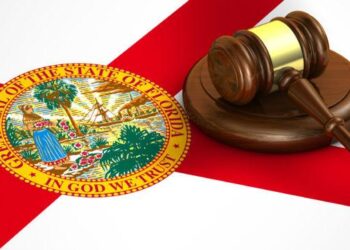Inflation is frequently used to describe the economic impact of rising oil or food prices. For example, if the price of oil rises from $75 to $100 per barrel, input prices for businesses will rise, as will transportation costs for everyone. As a result, many other prices may rise in response. Most economists, however, believe that the actual definition of inflation is slightly different. Inflation is a function of money supply and demand, which means that producing more dollars causes each dollar to become less valuable, causing the overall price level to rise.
In economics, inflation is and has been a hotly debated topic. Even the term “inflation” has different meanings depending on the context. Many economists, businesspeople, and politicians believe that moderate inflation is required to drive consumption, assuming that higher levels of spending are necessary for economic growth. Inflation is a term that is frequently used to describe the economic consequences of rising oil or food prices. If the price of oil rises from $75 to $100 per barrel, for example, business input prices will rise, as will transportation costs for everyone. As a result, many other prices could rise.
However, most economists believe that the true definition of inflation is slightly different. Inflation is a function of money supply and demand, which means that producing more dollars reduces the value of each dollar, causing the overall price level to rise. If you’re still not familiar with Inflation let’s delve a little deeper and learn more about some of its causes and effects.
What is inflation in economics?
Inflation is a measure of an economy’s rate of rising prices for goods and services. Inflation can be harmful to society if it leads to higher prices for necessities such as food. Inflation can occur in almost any product or service, including both need-based and want-based expenses like housing, food, medical care, and utilities, as well as want-based expenses like cosmetics, automobiles, and jewelry. When inflation becomes widespread in an economy, the prospect of further inflation becomes a major concern in the minds of both consumers and businesses.
Inflation is monitored by central banks in developed economies, including the Federal Reserve in the United States. The Fed has a 2% inflation target and adjusts monetary policy to combat inflation if prices rise too much or too quickly.
Inflation can be a source of concern because it reduces the value of money saved today. Inflation reduces a consumer’s purchasing power and can even make it difficult to retire. For example, if an investor earned 5% from stock and bond investments but the inflation rate was 3%, the investor only earned 2% in real terms. In this article, we’ll look at the fundamental causes of inflation, the various types of inflation, and who benefits from it.
What are the causes of inflation?
Numerous factors can cause an economy’s prices or inflation to rise. In most cases, inflation is caused by an increase in production costs or an increase in demand for goods and services.
Cost-push inflation
When prices rise due to production costs such as raw materials and wages, this is referred to as cost-push inflation. The demand for goods remains unchanged, while the supply of goods decreases due to higher production costs. As a result, the increased production costs are passed on to consumers in the form of higher finished-goods prices.
Rising commodity prices, such as oil and metals, are one indicator of potential cost-push inflation because they are primary production inputs. For example, if the price of copper rises, companies that use copper in their products may raise their prices.
If the demand for the product is unrelated to the need for copper, the company will pass on the higher raw material costs to customers. As a result, consumer prices rise despite no change in demand for the products consumed.
Wages have an impact on production costs and are typically the single largest expense for businesses. When the economy is doing well and the unemployment rate is low, labor or worker shortages can occur. Companies, in turn, raise wages to attract qualified candidates, causing the company’s production costs to rise. Cost-plus inflation occurs when a company raises its prices in response to an increase in employee wages.
Natural disasters can also drive prices higher. For example, if a hurricane destroys a crop such as corn, prices can rise across the economy since corn is used in many products.
Demand-pull inflation
Strong consumer demand for a product or service can cause demand-pull inflation. When there is an increase in demand for a broad range of goods across an economy, their prices tend to rise. While this is rarely a concern for short-term supply and demand imbalances, sustained demand can reverberate throughout the economy and raise prices for other goods, resulting in demand-pull inflation.
When unemployment is low and wages are rising, consumer confidence rises, leading to increased spending. Economic growth has a direct impact on the level of consumer spending in an economy, which can result in high demand for goods and services. As the demand for a particular good or service grows, so does the available supply.
As outlined in the economic principle of supply and demand, when there are fewer items available, consumers are willing to pay more to obtain the item. As a result of demand-pull inflation, prices rise.
Companies also have an impact on inflation, particularly if they manufacture popular goods. A company’s prices can be raised simply because consumers are willing to pay the higher amount. Corporations can also freely raise prices when the item for sale is something that consumers require daily, such as oil and gas. However, it is consumer demand that gives corporations the wiggle room to raise prices.
The housing market
For example, the housing market has experienced ups and downs over the years. Home prices will rise if homes are in high demand as a result of the economy’s expansion. The demand for ancillary products and services that support the housing industry is also affected. Construction products such as lumber and steel, as well as nails and rivets used in homes, may all see an increase in demand as a result of increased demand for housing.
Expansionary fiscal policy
Governments’ expansionary fiscal policies can increase both businesses’ and consumers’ discretionary income. Companies may spend tax cuts on capital improvements, employee compensation, or new hires if the government lowers taxes. Consumers may also buy more goods. The government could also stimulate the economy by increasing infrastructure spending. As a result, there may be an increase in demand for goods and services, leading to price increases.
Central banks’ expansionary monetary policy can lower interest rates. Central banks, such as the Federal Reserve, can lower the cost of lending for banks, allowing them to lend more money to businesses and consumers. The increased availability of cash throughout the economy leads to increased spending and demand for goods and services.
Measures of inflation
A few metrics are used to calculate the inflation rate. The Consumer Price Index (CPI), which measures prices for a basket of goods and services in the economy such as food, cars, education, and recreation, is one of the most widely used.
On a seasonally adjusted basis, the Consumer Price Index increased 0.9 percent in October 2021. The full index increased 6.2 percent over the previous year, the largest year-over-year increase since 1990. The Producer Price Index (PPI) is another measure of inflation that reports price changes that affect domestic producers. The PPI calculates prices for fuel, farm products (meats and grains), chemicals, and metals. If the price increases that cause the PPI to spike are passed on to consumers, the Consumer Price Index will reflect this.
Who benefits from inflation?
While inflation provides little benefit to consumers, it can provide a boost to investors who hold assets in inflation-affected markets. Those who own stock in energy companies, for example, may see their stock prices rise if energy prices rise.
Some businesses benefit from inflation if they can charge more for their products as a result of increased demand. When the economy is doing well and there is a high demand for housing, home-building companies can charge higher prices for selling homes. In other words, inflation can give businesses more pricing power and boost their profit margins. If profit margins are increasing, it means that the prices that companies charge for their products are rising faster than production costs.
Furthermore, business owners can withhold supplies from the market on purpose, allowing prices to rise to a favorable level. Companies, on the other hand, can be harmed by inflation if it is caused by an increase in production costs. Companies are jeopardized if they are unable to pass on higher costs to customers in the form of higher prices. If foreign competitors, for example, are unaffected by rising production costs, their prices will not need to rise. As a result, U.S. companies may be forced to absorb higher production costs, or risk losing customers to foreign-based competitors.
Common effects of inflation
Inflation is an economic term that refers to the sustained increase in the prices of goods and services over a given period. Inflation is seen as a sign of a struggling economy by some, while it is seen as a sign of a flourishing economy by others. In this section, we look at some of the aftereffects of inflation.
1. Erodes purchasing power
This first effect of inflation is simply another way of saying the same thing. Inflation is defined as a decrease in the purchasing power of currency caused by an increase in prices throughout the economy. Within living memory, a cup of coffee cost a dime on average. The price is now closer to three dollars.
A price increase could have resulted from a surge in coffee popularity, price pooling by a coffee producer cartel, or years of devastating drought, flooding, or conflict in a key coffee-growing region. The price of coffee products would rise in those scenarios, but the rest of the economy would remain largely unaffected. That example does not qualify as inflation because only the most caffeine-addled consumers would see a significant decrease in their overall purchasing power.
For prices to rise across a “basket” of goods and services, such as the one that comprises the most commonly used measure of price changes, the consumer price index, inflation must occur (CPI). When the prices of non-discretionary and impossible-to-substitute goods, such as food and fuel, rise, they can have a direct impact on inflation. As a result, economists frequently exclude food and fuel to examine “core” inflation, a less volatile measure of price changes.
2. Encourages spending
Buying now rather than later is a predictable reaction to declining purchasing power. Because cash only loses value, it is better to get your shopping done and stock up on items that are unlikely to lose value.
Filling up gas tanks, stocking the freezer, purchasing shoes in the next size up for the kids, and so on. For businesses, it means making capital investments that, in different circumstances, might have been postponed. When inflation takes hold, many investors buy gold and other precious metals, but the volatility of these assets can cancel out the benefits of their price rise protection, especially in the short term.
Over the long term, equities have been among the best inflation hedges. A share of Apple Inc. (AAPL) cost $29 in current (not inflation-adjusted) dollars at the close on December 12, 1980. After adjusting for dividends and stock splits, that share would be worth $7,035.01 at the close on February 13, 2018, according to Yahoo Finance. According to the Bureau of Labor Statistics (BLS) CPI calculator, that figure is $2,438.33 in 1980 dollars, implying an 8,346 percent real (inflation-adjusted) gain.
Assume you buried that $29 in your backyard instead. When you dug it up, the nominal value would have remained the same, but the purchasing power would have fallen to $10.10 in 1980 terms, a 65 percent depreciation. Of course, not every stock would have performed as well as Apple: in 1980, you were better off burying your money than buying and holding a share of Houston Natural Gas, which would merge to form Enron.
3. Causes more inflation
Unfortunately, the desire to spend and invest in the face of inflation tends to increase inflation, creating a potentially disastrous feedback loop. As individuals and businesses spend more quickly to the amount of time they hold their depreciating currency, the economy finds itself awash in cash that no one wants. In other words, as the supply of money exceeds the demand, the price of money—the purchasing power of currency—decreases at an increasing rate.
When things get really bad, a prudent tendency to stock up on business and household supplies rather than sitting on cash devolves into hoarding, resulting in empty grocery store shelves.
People become desperate to get rid of their currency, so every payday becomes a frenzy of spending on anything as long as it isn’t ever-more-worthless money.
As a result, hyperinflation has resulted in Germans papering their walls with worthless Weimar Republic marks (the 1920s), Peruvian cafes raising their prices multiple times a day (the 1980s), Zimbabwean consumers hauling around wheelbarrows of million- and billion-Zim dollar notes (the 2000s), and Venezuelan thieves refusing to steal even bolivares (2010s).
4. Raises the cost of borrowing
As these examples of hyperinflation demonstrate, states have a strong incentive to keep price rises under control. For the past century, the approach in the United States has been to manage inflation through monetary policy. The Federal Reserve (the United States’ central bank) does so by relying on the relationship between inflation and interest rates.
Companies and individuals can borrow cheaply to start a business, earn a degree, hire new employees, or buy a gleaming new boat when interest rates are low. In other words, low-interest rates encourage spending and investing, which in turn fuels inflation.
Central banks can put a stop to these rampaging animal spirits by raising interest rates. The monthly payments on that boat or that corporate bond issue suddenly seem a little high. It is preferable to put some money in a bank where it can earn interest. Money becomes more scarce when there isn’t as much cash floating around. Because money is scarce, its value rises; however, central banks generally do not want money to become more valuable: they fear outright deflation nearly as much as they do hyperinflation. Rather, they push interest rates in either direction to keep inflation near a target level (generally 2 percent in developed economies and 3 percent to 4 percent in emerging ones).
The role of central banks in controlling inflation can also be viewed through the lens of the money supply. If the amount of money grows faster than the economy, the money becomes worthless, and inflation occurs. That’s what happened in the 16th century when Aztec and Inca bullion flooded Habsburg Spain, and when Weimar Germany fired up the printing presses to pay its World War I reparations.
When central banks want to raise interest rates, they usually can’t do so through simple fiat; instead, they sell government securities and withdraw the proceeds from the money supply. The rate of inflation decreases as the money supply shrinks.
5. Lowers the cost of borrowing
Inflation will generally lower borrowing costs when there is no central bank or when central bankers are beholden to elected politicians.
Assume you borrow $1,000 at a 5% annual interest rate. If inflation is 10%, the real value of your debt is decreasing faster than the total amount of interest and principal you are repaying. When household debt levels are high, politicians find it electorally profitable to print money, thereby fueling inflation and evading voters’ obligations. When the government is deeply in debt, politicians have an even stronger incentive to print money and use it to pay down debt. If inflation occurs as a result, so be it.
Politicians’ sometimes harmful fondness for inflation has persuaded several countries that fiscal and monetary policymaking should be handled by independent central banks. While the Fed has a statutory mandate to seek maximum employment and stable prices, it does not require congressional or presidential approval to set interest rates. However, this does not imply that the Fed has always had complete freedom in policymaking. Former Minneapolis Fed President Narayana Kocherlakota wrote in 2016 that the Fed’s independence is “a post-1979 development that is largely dependent on the president’s restraint.”
6. Reduces unemployment
There is some evidence that inflation can cause unemployment to fall. Wages are sticky, which means they change slowly in response to economic shifts. The Great Depression, according to John Maynard Keynes, was caused in part by the downward stickiness of wages. Workers were fired instead of being laid off as a result of their refusal to accept pay cuts (the ultimate pay cut).
The same phenomenon may also occur in reverse: once inflation reaches a certain level, employers’ real payroll costs fall, allowing them to hire more workers. That hypothesis appears to explain the inverse relationship between unemployment and inflation, known as the Phillips curve, but a more popular explanation places the burden on unemployment. According to the theory, as unemployment falls, employers are forced to pay more for workers with the skills they require. As wages rise, so does consumer spending power, causing the economy to heat up and fuel inflation; this is known as the cost-push inflation model.
7. Increases growth
Inflation discourages saving because the purchasing power of deposits erodes over time unless a vigilant central bank is on hand to raise interest rates. This prospect incentivizes both consumers and businesses to spend or invest. The increase in spending and investment leads to economic growth, at least in the short term. Similarly, the negative correlation between inflation and unemployment implies a tendency to put more people to work, thereby stimulating growth. This effect is most noticeable when it is not present.
In 2016, central banks around the developed world were unable to coax inflation or growth to healthy levels. Interest rate cuts to zero and below did not appear to be effective. Neither did the purchase of trillions of dollars in bonds as part of the money-creation exercise known as quantitative easing.
This conundrum reminded me of Keynes’ liquidity trap, in which central banks’ ability to stimulate growth by increasing the money supply (liquidity) is rendered ineffective by cash hoarding, which is caused by economic actors’ risk aversion in the aftermath of a financial crisis. Disinflation, if not deflation, is caused by liquidity traps.
Moderate inflation was viewed as a desirable growth driver in this environment, and markets welcomed the increase in inflation expectations brought about by Donald Trump’s election. However, markets fell sharply in February 2018 due to fears that inflation would lead to a rapid increase in interest rates.
8. Reduces employment
Wistful talk about the benefits of inflation may sound strange to those who remember the 1970s’ economic woes. When growth is slow, unemployment is high, and inflation is in the double digits, this is referred to as “stagflation” by a British Tory MP in 1965.
Stagflation has been a source of consternation for economists. Early on, Keynesians refused to believe it could happen because it appeared to contradict the inverse relationship between unemployment and inflation described by the Phillips curve. After coming to terms with the reality of the situation, they blamed the worst of it on the supply shock caused by the 1973 oil embargo: as transportation costs skyrocketed, the theory went, the economy came to a halt.
In other words, it was a case of cost-push inflation.
This idea is supported by five consecutive quarters of productivity decline, which ended with a healthy expansion in the fourth quarter of 1974. However, the drop in productivity in the third quarter of 1973 occurred before Arab OPEC members shut off the taps in October of that year.
The kink in the timeline indicates another, an earlier contributor to the 1970s’ malaise, the so-called Nixon shock. Following the withdrawal of other countries, the United States withdrew from the Bretton Woods Agreement in August 1971, effectively ending the dollar’s convertibility to gold. The dollar fell in value against other currencies: in July 1971, a dollar bought 3.48 Deutsche marks, but only 1.75 in July 1980. Inflation is a common side effect of currency depreciation.
Even so, depreciation of the dollar does not fully explain stagflation since inflation began to accelerate in the mid-to-late 1960s (unemployment lagged by a few years). According to monetarists, the Fed was ultimately to blame. M2 money stock nearly doubled in the decade preceding 1970, nearly twice as fast as GDP, resulting in what economists commonly refer to as “too much money chasing too few goods,” or demand-pull inflation.
Supply-side economists, who emerged in the 1970s as a counterweight to Keynesian hegemony, won the election when Reagan won both the popular vote and the electoral college. They blamed the ills on high taxes, onerous regulations, and a generous welfare state.
9. Weakens or strengthens the currency
High inflation is usually associated with a falling exchange rate, though this is usually due to the weaker currency causing inflation rather than the other way around. When their currencies fall against those of their trading partners, economies that import significant amounts of goods and services—which, for the time being, is just about every economy—must pay more for these imports in local currency terms.
Assume that Country X’s currency falls 10% against Country Y’s. The latter does not need to raise the price of the products it exports to Country X for them to cost Country X 10% more; the weaker exchange rate is sufficient. Multiply cost increases across a large enough number of trading partners selling a large enough number of products, and the result is economy-wide inflation in Country X.
But, once again, depending on the circumstances, inflation can do one thing or the polar opposite. When most of the global economy’s moving parts are removed, it appears perfectly reasonable that rising prices lead to a weaker currency. However, in the aftermath of Trump’s election victory, rising inflation expectations drove the dollar higher for several months.
The reason was that interest rates were so low around the world—almost certainly the lowest in human history—that markets were likely to seize any opportunity to earn a little money for lending rather than pay for the privilege (as holders of $11.7 trillion in sovereign bonds were doing in June 2016, according to Fitch).
Conclusion
Inflation is associated with general price increases. Inflation can be caused by a variety of factors, including government action. In some cases, the government’s attempt to control inflation can exacerbate the problem. However, a little inflation is a good sign of an expanding economy.









